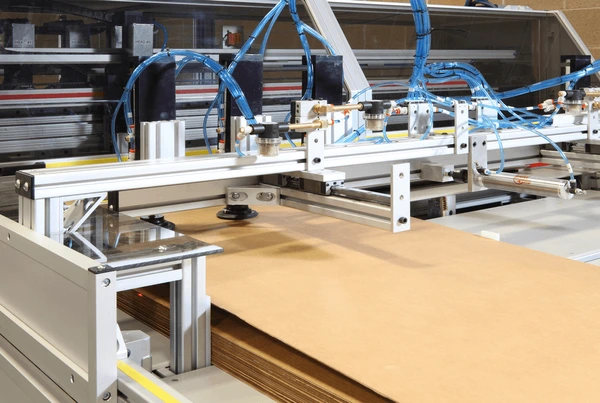In packaging, machinery isn’t just an asset—it’s the backbone of production. For corrugated box makers, the biggest financial decision is whether to buy new or used corrugation machines.
At first glance, new equipment looks safer and used equipment looks cheaper. But the true cost is more complex. When you account for purchase price, maintenance, downtime, efficiency, and resale value, the equation changes.
Let’s break it down.
1. Upfront Investment
- New Machines:
- Large corrugation plants can cost ₹4–8 crore ($500,000–$1M+) depending on automation and capacity.
- Smaller semi-automatic machines still run ₹20–50 lakh ($25,000–$60,000).
- Used Machines:
- Typically 40–70% cheaper than new.
- A decent used corrugator can be had for ₹15–30 lakh, while refurbished 5-ply plants may cost ₹80 lakh+.
👉 Impact: Used machines dramatically lower entry barriers, especially for startups or small regional converters.
2. Lead Time
- New Machines: Often require 6–12 months from order to commissioning, particularly for imported equipment.
- Used Machines: Usually available for immediate delivery, especially from local dealers or refurbishers.
👉 Impact: If you need to capture contracts quickly, used is the faster way to get operational.
3. Operating Efficiency
- New Machines:
- Higher output speeds (200–350 m/min vs. 80–150 m/min for older units).
- More energy-efficient.
- Advanced automation = lower labor costs.
- Used Machines:
- Adequate for small-to-mid capacity needs.
- May consume more power and require more manpower per shift.
👉 Impact: Over time, operational inefficiency can erode the initial savings on used equipment.
4. Maintenance & Downtime
- New Machines:
- Lower maintenance in the first 5–7 years.
- OEM support and warranties reduce risk.
- Used Machines:
- Higher probability of breakdowns.
- Parts may be harder to source (especially if the model is discontinued).
- Skilled technicians are needed for upkeep.
👉 Impact: Downtime costs often go underestimated. For busy plants, every hour offline means lost orders.
5. Financing & Depreciation
- New Machines:
- Easier to finance through banks.
- Faster depreciation benefits for tax write-offs.
- Used Machines:
- Harder to finance—often cash-heavy deals.
- Slower depreciation, but lower book value risk.
👉 Impact: Financial institutions usually view new machines more favorably, which matters if you’re scaling on credit.
6. Resale Value
- New Machines: Lose 20–30% of value the moment they’re commissioned. After 5–7 years, may still retain decent resale demand.
- Used Machines: Already depreciated, meaning resale losses are smaller. However, demand depends on brand, age, and region.
👉 Impact: Premium brands (BHS, Fosber, Mitsubishi) retain resale value better than local or unbranded machines.
7. The Intangibles
- Customer Perception: Large clients may prefer suppliers with modern, automated plants.
- Flexibility: Used machines allow startups to experiment with product lines without overcommitting capital.
- Sustainability: Using refurbished machines reduces carbon footprint, a growing factor in supply-chain decisions.
The Verdict: Which Is Cheaper in the Long Run?
- For startups and small packaging units, used machines make more sense. They lower risk, shorten payback periods (often 1–2 years), and allow flexibility.
- For mid-to-large scale plants, new machines often win in the long run. Higher speed, lower labor, and energy savings offset the upfront premium.
In other words:
- Used = best for market entry and cautious expansion.
- New = best for scaling large, long-term operations.
Final Word
The “true cost” of a corrugation machine isn’t just about the sticker price. It’s about how quickly it pays back, how reliably it runs, and how well it positions your business to win customers.
Smart buyers weigh both options—but the right choice depends less on the machine itself and more on your stage of business, target market, and growth ambitions.

